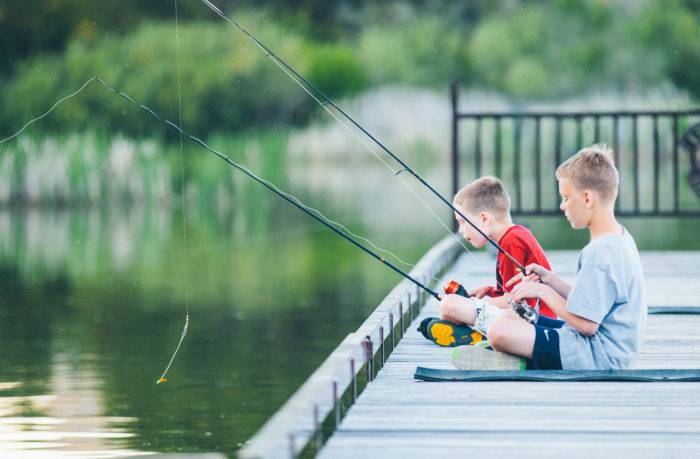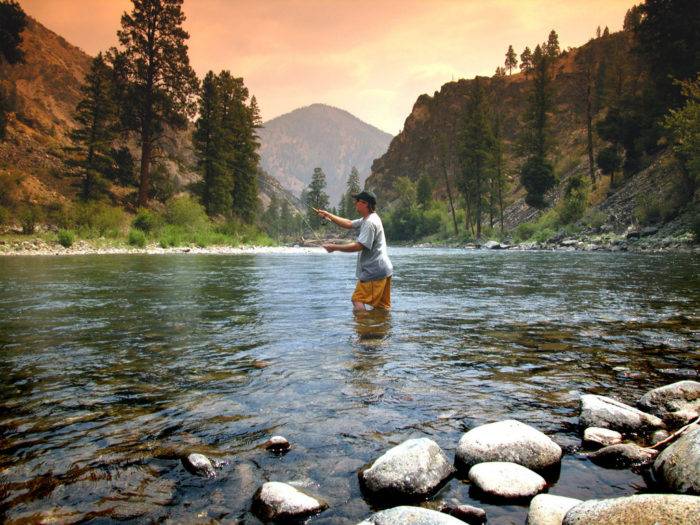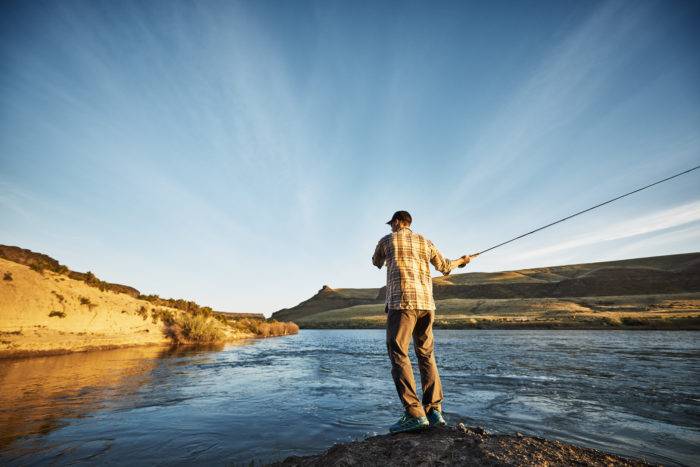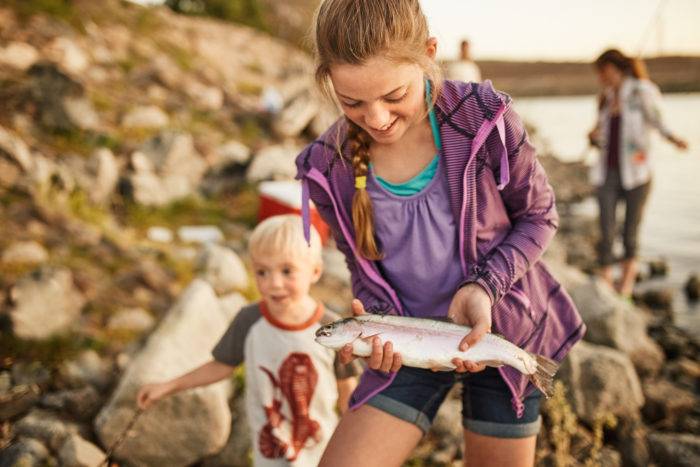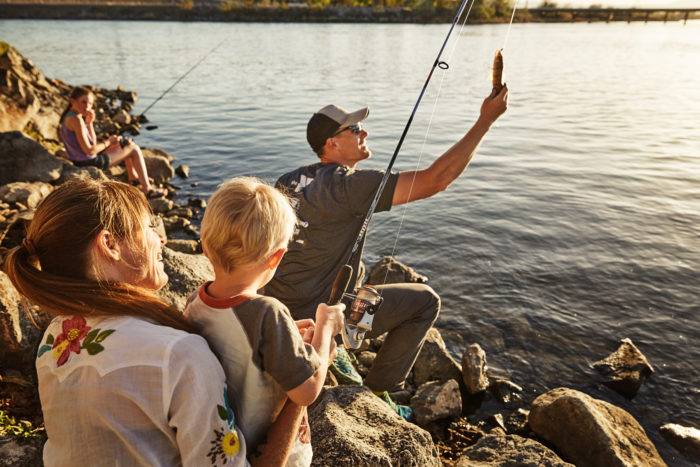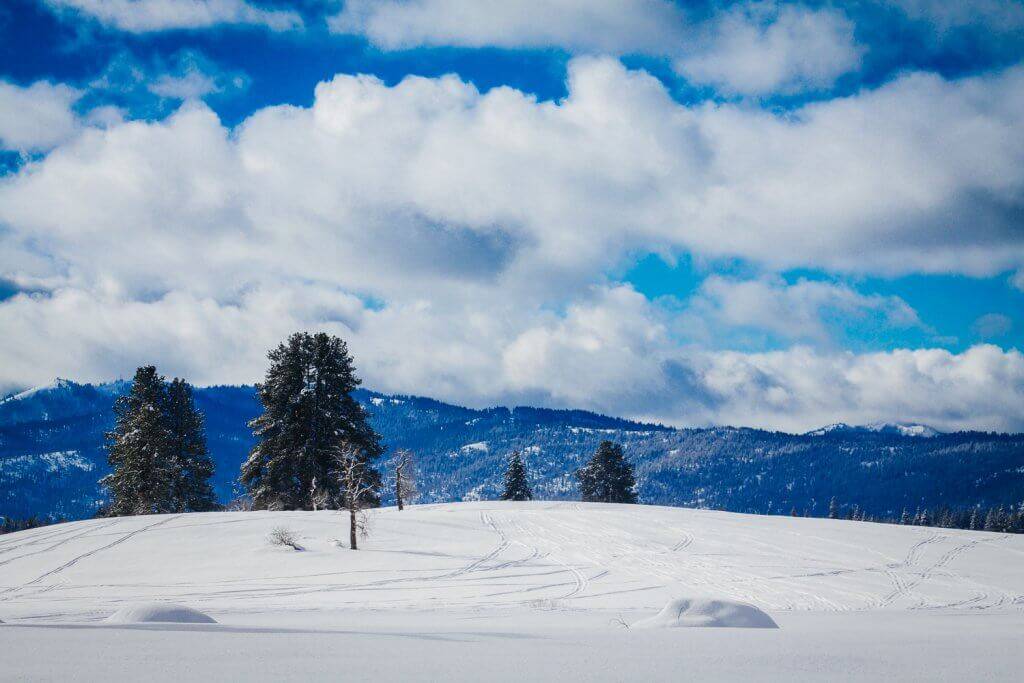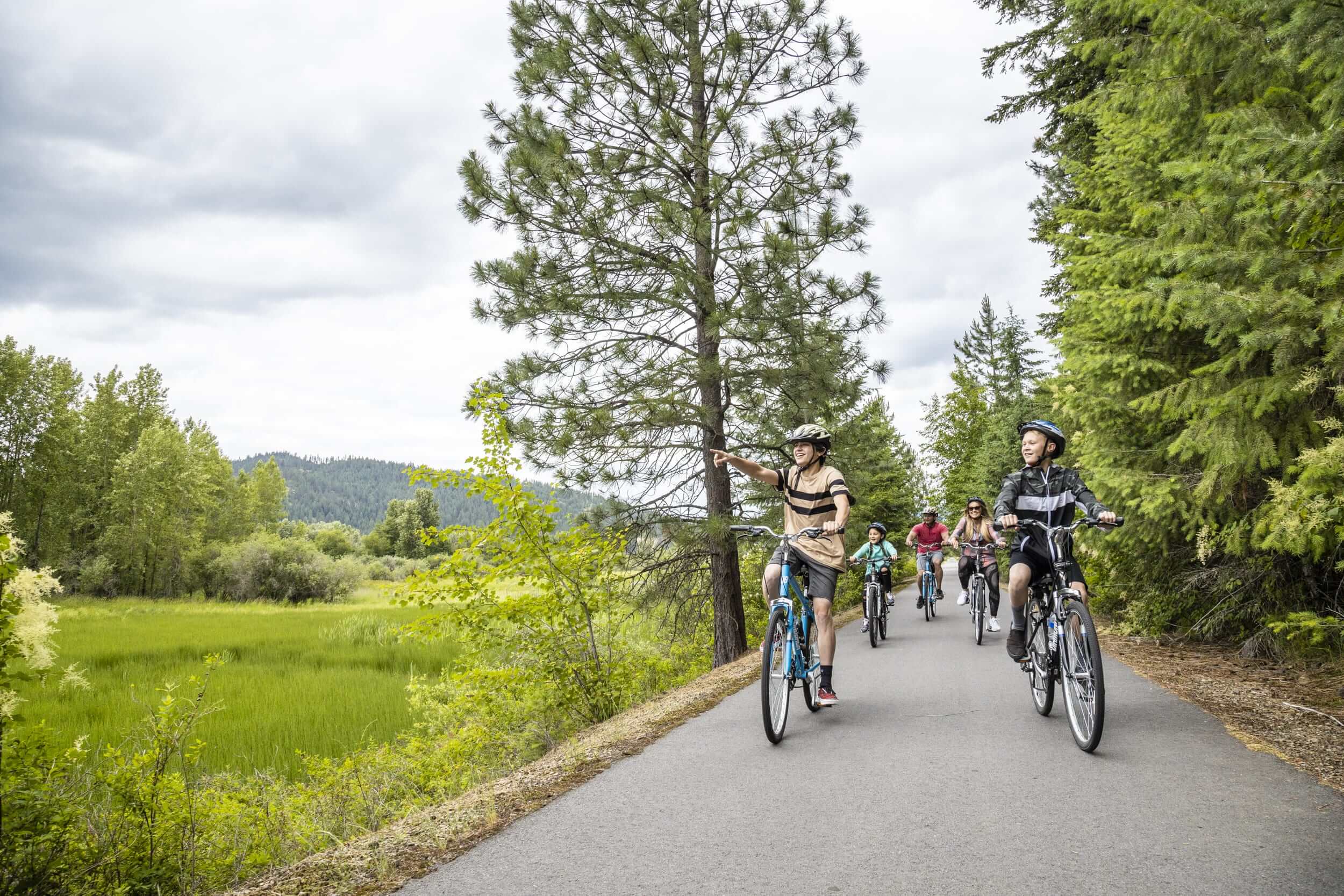Idaho has nearly 30 species of game fish and an abundance of rivers, lakes, creeks, reservoirs and ponds. Even with all this opportunity, the thought of going fishing can still feel daunting. Where should you go? What bait should you use? What techniques work best? Relax! A few simple tips should help make your fishing experience more pleasurable and successful.
1. Start at the beginning
Whether you’re learning to ski or ride a bike, you usually start easy and work up to bigger challenges. Fishing is no different. Try it out at a local pond for an hour or two. Once you’re having fun there, visit a nearby reservoir or lake. As you progress, consider planning an extended fishing weekend, fishing on rivers, or learning more techniques.
2. Keep it simple
Fish are pretty simple creatures and have relatively small brains (despite what we say when they outsmart us!)—so you don’t need fancy gear. A simple spinning rod like the old one in your garage or a $20 Barbie pole will work just fine. There are two bulletproof methods that should be your “bread and butter”: 1) Put a worm and marshmallow on your hook, with sinkers approximately 24″ from the hook. The sinkers (weights) will drop your bait to the bottom while the marshmallow will help float your worm where fish can see it. Keep your line taut and, when you feel the fish “tap, tap,” wait three seconds and start reeling. 2) Use a bobber with a worm 24-36″ below your bobber. When the bobber drops below the water, that means a fish has taken your bait, so start reeling! In the summer, you can catch grasshoppers to use in place of worms, which only adds to the fun.
3. Focus on the experience
Many of us have fond memories of fishing as a child. I’m convinced that this has less to do with fishing and more to do with the experience. If fishing is an activity you want to share with your family, definitely focus on the experience. Fishing should be fun, and enjoying time together in the outdoors should be more important than catching a lot of fish. Pack everyone’s favorite food and drinks, bug spray, and sunscreen, and be prepared for sudden changes in the weather, including rain. When the fishing’s slow, keep everyone engaged with activities like roasting hotdogs over a campfire, building a sandcastle, skipping rocks, and setting up camp.
4. Ask an expert
One of the great things about fishing is that there are a lot of people who are excited to help you. A good first stop is your local tackle shop. They’re happy to share their experience, as part of their business model is to provide valuable knowledge so that you’ll become a repeat customer. Second, call your local Idaho Fish and Game office. These folks are passionate about the outdoors and wildlife, are in the field every day, and are always more than willing to point the public in the right direction. And, lastly, when you do go fishing, you’re likely to see other anglers. Pay attention to what they’re doing, and don’t be shy about striking up a conversation to find out what’s working for them.
5. Know the rules
Before you go fishing, check Idaho Fish and Game regulations for the water body you’re headed to. Different locations have different rules for the species, number, and size of fish you’re allowed to keep. You’ll need a valid Idaho fishing license, which you can purchase at your local tackle shop or most convenience stores in rural Idaho. Children 13 or younger do not need a license. Each year, you can fish without a license on Idaho’s Free Fishing Day, the second Saturday of June. Idaho Fish and Game staff are on hand around the state that day to help first-timers get the hang of it.
6. Find some stocked spots
With thousands of options to choose from, I can honestly say that every place that has fish is my favorite. Thankfully, Idaho Fish and Game posts a stocking report, which not only lists Idaho’s fishing spots but when they’re being stocked. Increase your odds by visiting close to the stocking dates, and you’re sure to “get hooked”!
Published on May 16, 2016



